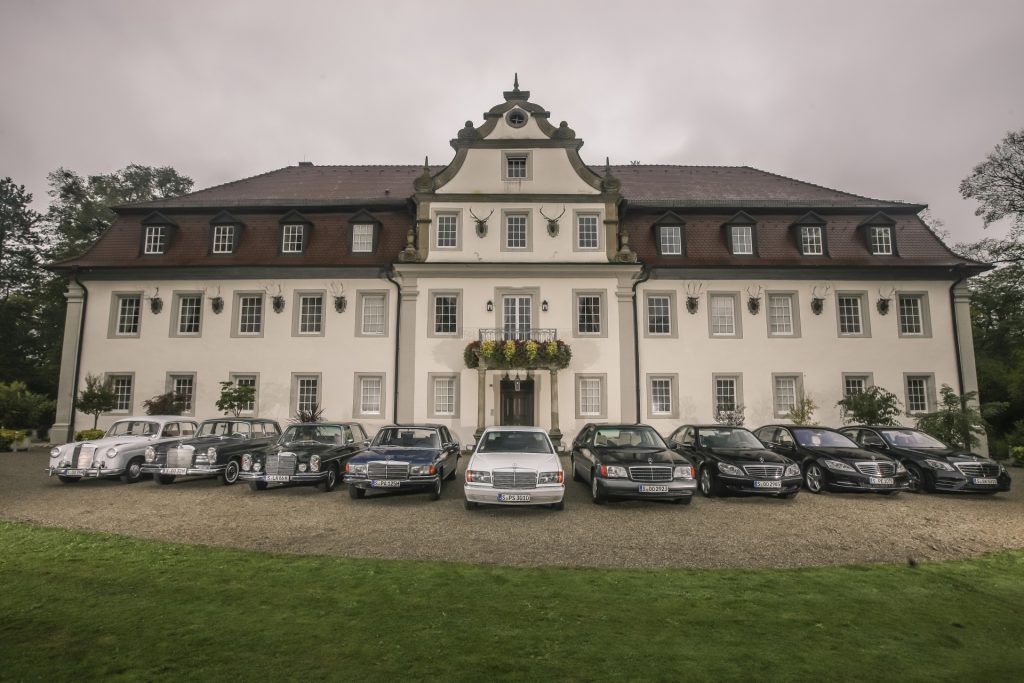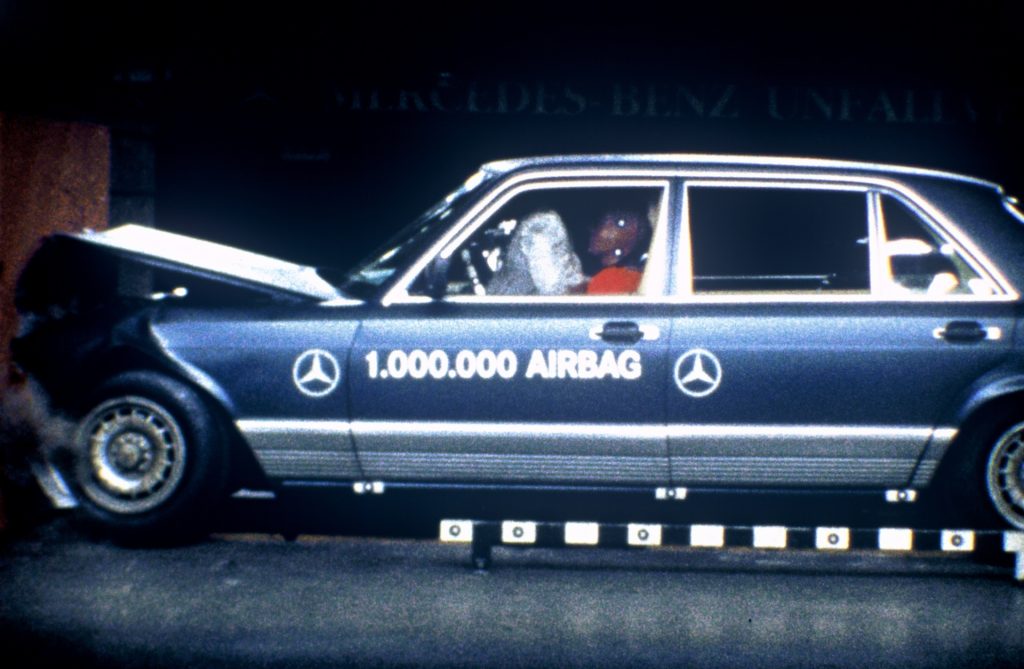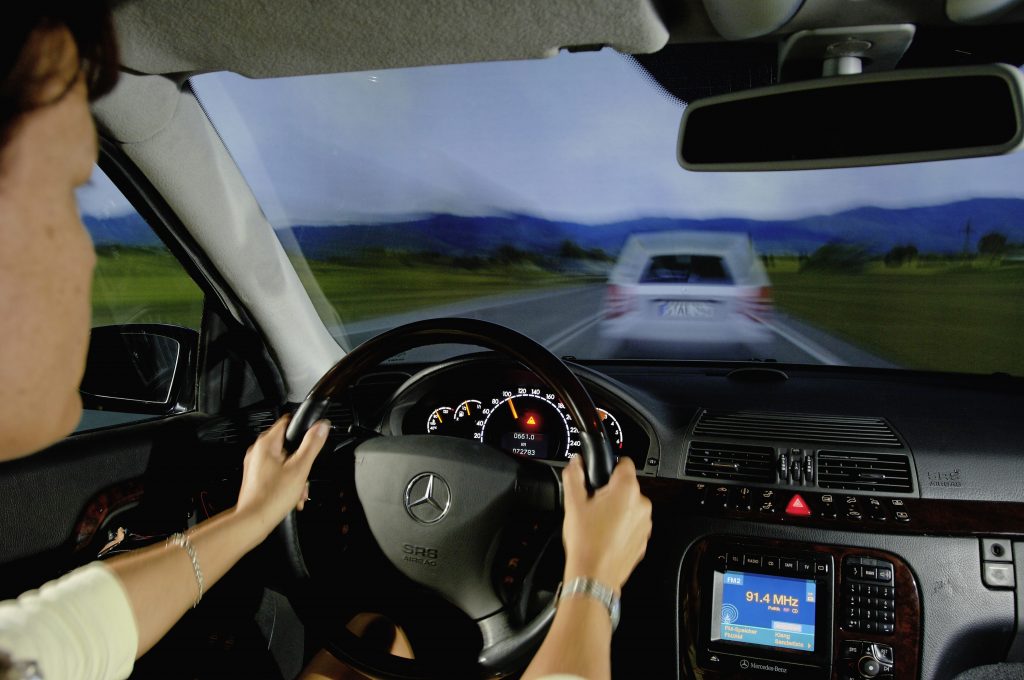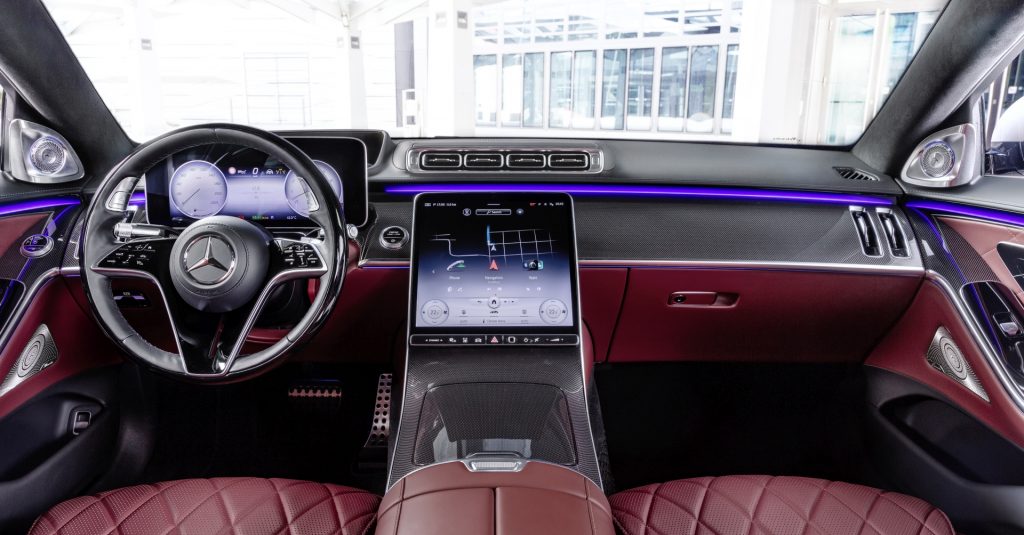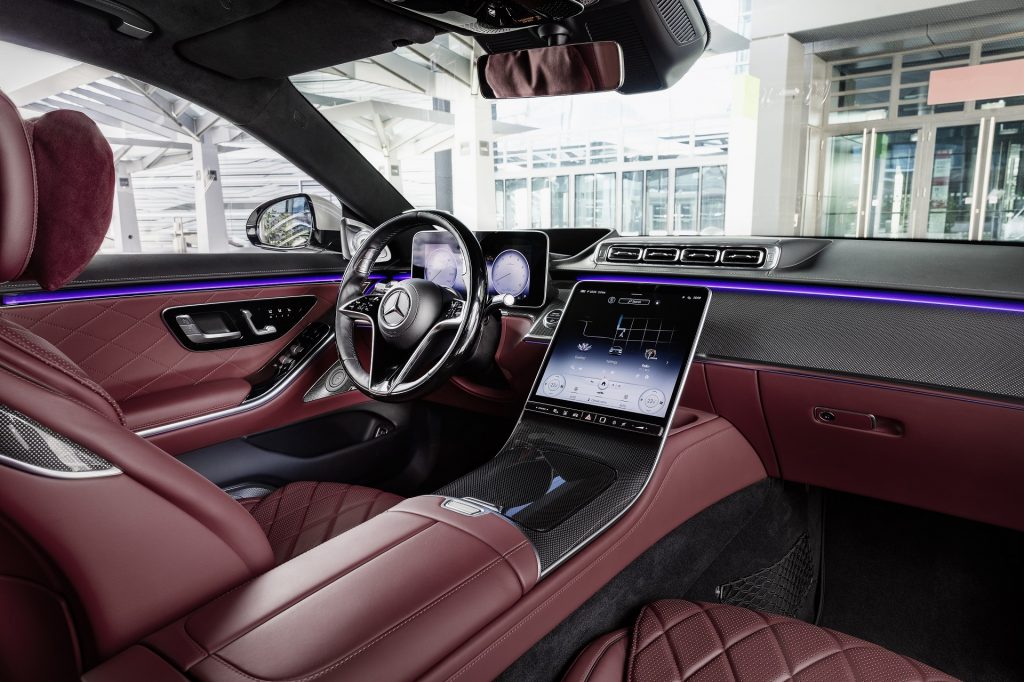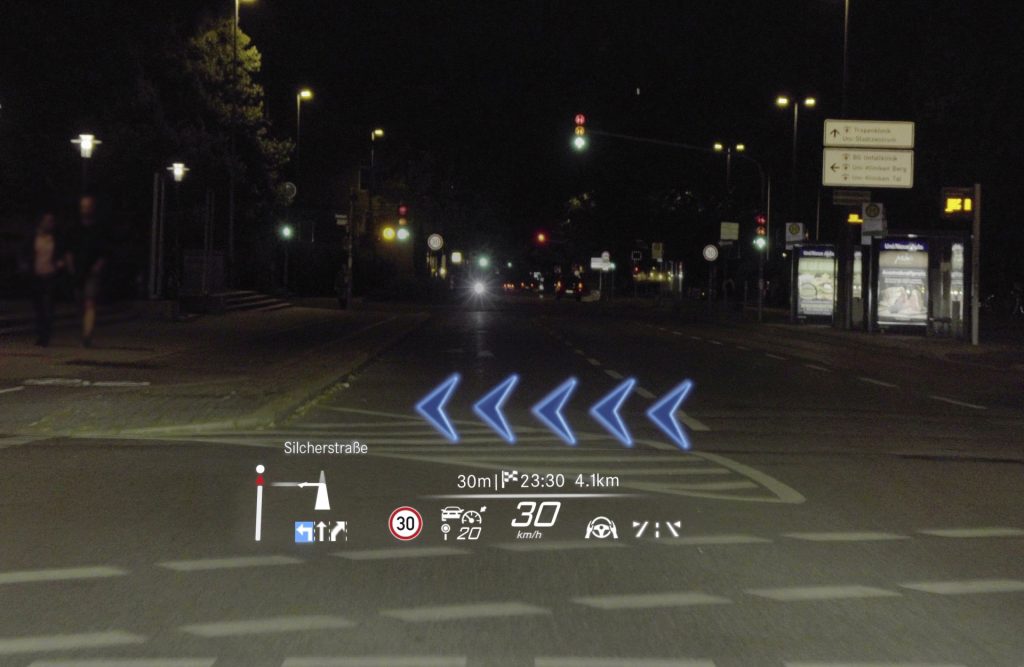Want a sneak peek at the gadgets and gizmos on your car of tomorrow? Look no further than the Mercedes-Benz S-Class of today
It is probably impossible to answer a question: “What is the best car in the world?”. However, if there was a car that could legitimately lay claim to that title, the Mercedes-Benz S-Class would be a strong contender.
Throughout its seven decade history, the S-Class has been the yardstick by which other luxury cars (and to to a certain extent, the industry in general) look up to. It may not be the last word in sheer opulence, but it’s undoubtedly one of the leading pioneers in automotive technology.
And despite its prestige status, in a way it’s a car of the people: history has shown repeatedly that whatever innovations debut on an S-Class – particularly safety-related ones – you can expect to see trickled down to your average family car about a decade down the line. So you could say that the arrival of any new S-Class is a momentous occasion not just for Mercedes, but for the whole car industry too.
With the new seventh-generation S-Class that’s just been launched, that narrative is no different, packed as it is with some really intriguing technology. But before we get into how that’s going to change the cars of 2030, we thought it’d be good to stop and appreciate the most significant contributions the S-Class has made to our world of motoring:
W111 “Fintail” (1959-1968) – Crumple zones
Have you ever come across pictures or videos of car crashes and seen people comment, “Oh they don’t make cars like they used to, when you crashed an old car it remained it one piece!”

Quite simply, those people are flat out wrong, and it’s all thanks to the W111-series “Fintail” Mercedes sedan introduced in 1959. This was the first car in the world to incorporate crumple zones into its structure, areas on the front and rear of the car which are designed to deform in a crash, absorbing the destructive energy instead of transmitting it into the main passenger compartment.
Basically, crumple zones mean that it’s the car that squishes out of shape in a collision rather than the occupants, and is one of the fundamental principles of car design today.
W116 (1971-1979) – Anti-lock brakes
What’s the best solution to staying safe in a crash? Why, avoiding one in the first place, of course. Inspired by aircraft technology, the anti-lock braking system (ABS) is arguably the most significant automotive safety development of the 20th Century, and is not only a widespread feature today, but even mandatory equipment in most parts of the world.
ABS works by intermittently grabbing and releasing the brakes several times a second, so that your car’s wheels are always rotating and ensuring you’re able to steer away from an impending collision in addition to slowing down for it. Without ABS, what can happen is that the force from the brakes exceeds the grip of the tyres, causing the wheels to lock up and the car to careen straight into whatever it happens to be heading towards.
The W116-series S-Class wasn’t quite the first car to introduce ABS when the feature debuted in 1978. It was beaten to the punch by the Chrysler Imperial and Toyota Crown. But since these cars were never sold internationally, Mercedes could be credited with introducing the technology to the worldwide market.
W126 (1979-1991) – Airbags
If ABS isn’t enough to prevent an accident then perhaps the next best thing is to make the impact as comfy as possible, right? Alright, receiving an rapidly expanding bag of gases to the face isn’t exactly comfortable (they’ve been known to break noses as well as inappropriately-positioned limbs), but airbags are another life-saver that made its premiere on an S-Class.
The driver’s airbag exploded (hur hur) onto the scene in the W126-series S-Class in 1981, followed by the passenger airbag in 1985. These days, you won’t find a new car on sale that doesn’t have at least two airbags, and even something like a humble Toyota Corolla can have six or more. The latest Mercedes S-Class meanwhile, features a never before seen airbag development that we’ll get to in a bit…
W140 (1991-1998) – Stability control
Another common active safety feature we see today that helps mitigate an accident in the first place is electronic stability control (ESC). A development made possible by ABS, stability control utilises an array of sensors to detect when a car is skidding out of control, and then brakes individual wheels to stop the slide and bring the car back into line.
However, the computing power required for such an advanced task wasn’t cheap when the feature arrived in 1995, which is probably why it was available initially only on the top-of-the-range S600 Coupe.

W220 (1998-2005) – Radar-guided cruise control
The turn of the millennium brought a smaller, lighter S-Class, but also a smarter one. This was when the world saw the first buds of what we would recognise as autonomous driving today.
The W220-series S-Class marked the arrival of Distronic, Mercedes-Benz’s name for its radar-guided cruise control system. This wasn’t the first system of its kind that could automatically maintain a safe distance from the vehicle in front. It was the first system to be able to bring the car to a standstill, in stop-go traffic, and accelerate back up to cruising speed without driver intervention.
Additionally, where prior S-Classes had moved the game on in both passive (crumple zones, airbags) and active safety (ABS, ESC), this generation blurred the lines between the two, in the fractions of a second just before collision. Pre-Safe, as the system was called, helped optimise protection for occupants by closing the sunroof, tightening the seatbelts, and even repositioning the seats.
W222 (2013-2020) – Road-scanning suspension
The previous generation S-Class greatly expanded the scope and capabilities of Pre-Safe. This time, adding pedestrian and cross-traffic detection. It had the ability to autonomously slam on the brakes should the driver fail to do so. It could also detect if an impact was incoming from the rear, and take the appropriate measures accordingly.
Away from the safety features, the W222-series also had a breakthrough in ride comfort, with Magic Body Control. Dubbed by Mercedes as the first suspension system with “eyes”, the car could scan the road ahead for bumps and undulations, and prime the dampers at each corner in anticipation, allowing the car to anticipate road imperfections as opposed to simply reacting to them.
W223 (2020) – Everything but the kitchen sink
And finally, we come to the brand new model; there’s so much tech and features to unpack that the press release extends to a dizzying 75 pages long. But don’t worry, we’ve combed through it to bring you just a few digestible highlights:
- Rear seat frontal airbags
The place to be in any S-Class is of course the rear seat. In addition to the multitude of comfort enhancing options (up to 43.5 degrees of backrest recline, heated head cushions, massage and climate functions), there’s also another world first: a frontal airbag for rear passengers.
With the amount of legroom available, we didn’t think there is a danger of rear passengers bonking their heads. Apparently however, the crash forces are still high enough to be a worry. What this rear airbag does is deploy ‘particularly gently’ to reduce injuries to the heads and necks of rear occupants.
There’s also a new airbag in between the two front seats, to prevent driver and passenger contact during a side impact, as well as one at the base of the rear seats to prevent people sliding (submarining) under the seatbelt when they’re reclined.
- Level 3 autonomous driving
Autonomous driving might be one of the big buzzwords that car manufacturers like to impress you with, but to be honest, we’re not at the stage where we can let cars drive themselves yet. At least, not until the new S-Class hits the road.
You see, all existing auto-drive functions (even Tesla’s much-touted Autopilot mode) are technically merely still driving assistance features, and are only Level 2 on the industry-standard Society of Automotive Engineers’ Driving Automation scale. This means that although the car can technically drive itself, the driver must still pay attention to the road and maintain control, and is not allowed to hand the reins completely over to the car.
The new S-Class’ Drive Pilot system though, is the first ever implementation of Level 3 autonomy in a road car, and can be activated in slow-moving traffic up to 60km/h. At this level, drivers are allowed to take their eyes and minds off the road and attend to other matters such as sending emails or grabbing a bite, but must be able to take over manual control within ten seconds.
Whether this option will be available locally remains to be seen. The outgoing Audi A8 was technically the first production car to be Level 3 capable. Legislation however, has still not passed to make the feature a reality.
- 3D and augmented reality
With the new S-Class, you really have no excuses for missing that turn on the navigation system. The fancy head-up display claims to be equivalent to a 77-inch monitor. It features augmented reality graphics to really catch your eye. Pictures can describe this much better than words can, so we’ll leave this video here to do the explaining:
Most buttons are replaced by a massive portrait-oriented touchscreen, with a larger OLED display as an option. The driver’s instrument panel meanwhile, has a 3D mode for “a spatial view”, and you don’t even need special glasses to see it!
- Tiptoeing for safer side impacts
Side impacts are the most damaging kind of collision, primarily because there’s less distance between the cabin and environment, and also because the very fact that there are doors means there are two large holes in the car’s structure. Side and curtain airbags have been significant advances in this area, but the S-Class takes it (literally) to a whole new level.
Mercedes calls it Pre-Safe Impulse Side, and what it does is it jacks the air suspension up to its maximum height (+8cm), so that the car’s sills – which are stronger than the doors and central pillar – can absorb the blow instead.
- Lighting up your world
All S-Classes get full LED lights as standard, but if you go for the Digital Light option, you get something truly illuminating (ok, last pun, I promise).
In these headlights, three main LED elements are augmented by 1.3 million micro-mirrors (yes, you read that right) per side, making for a resolution of 2.6 million “pixels” per car. The minute and intricate ways the mirrors can direct and refract the light beams mean the headlights themselves can communicate messages. Here are some examples Mercedes has given:
– Warning of recognised roadworks by projecting an excavator symbol onto the road surface
– Aiming a spotlight at pedestrians detected at the roadside as a warning
– Traffic lights, stop signs or no-entry signs are pointed out by projecting a warning symbol onto the road surface
– Assistance on narrow road lanes (roadworks) by projecting guidelines onto the road surface
Mercedes-Benz Singapore says that the new S-Class should arrive in Singapore by the middle of 2021. It’s just a shame we’ll have to wait much longer to see these features appear in lesser cars too.




